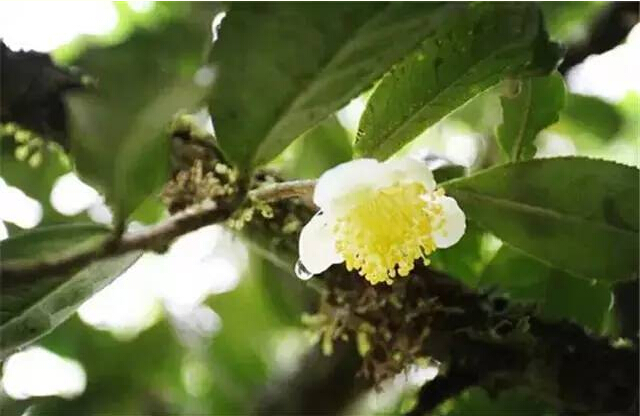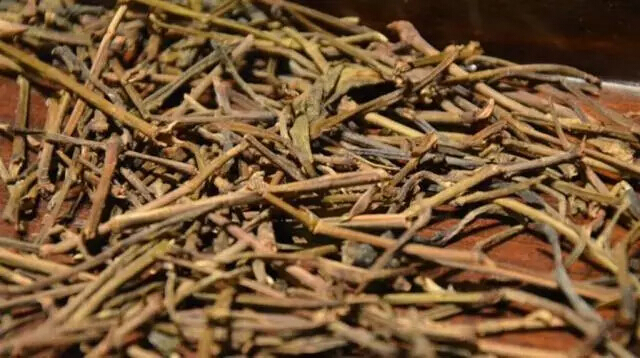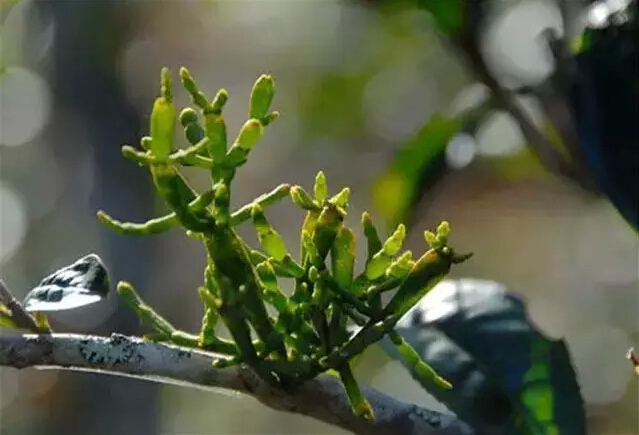Is the term 'squeeze dry' appropriate for Pu-erh tea? In fact, when drinking Pu-erh tea, just consuming the tea leaves isn't enough. Let's explore the other 'treasures' of Pu-erh tea!

Tea Flowers
First, it's important to clarify that Pu-erh tea flowers are not camellias. Compared to the delicate latter, Pu-erh tea flowers are more like 'tough roses.' They are pure white with golden stamens, appearing plump and glossy. When brewed, the liquid is crystal-clear and yellowish, with a refreshing taste and a hint of honey aroma.
Like all herbal teas, Pu-erh tea flowers can be brewed directly. Besides beautifying effects, they also help calm the mind and improve sleep. If you struggle with sleep, try Pu-erh tea flowers—now available in pressed cake form!

Tea Stems
What? Tea stems are drinkable too?
Yes! Though not technically tea leaves, Pu-erh tea stems contain high sugar content, resulting in a mellow and sweet flavor. When blended in varying proportions, they add unique characteristics to Pu-erh tea cakes. Thus, dedicated Pu-erh tea stems are also sold in the market.
Like tea leaves, tea stems can also age. Many tea enthusiasts now blend their own Pu-erh stem bricks, aging them for years. Once brewed, the rich tea soup, combined with the stems' natural sweetness, offers an unforgettable experience.
Old Tea Heads
Before discussing old tea heads, we must first understand the fermentation process of ripe Pu-erh tea—pile fermentation.
During this process, tea leaves secrete pectin, a sticky natural substance that binds some leaves into hard clumps, forming what we now call old tea heads.
Traditionally, workers would break these clumps with hoes—even if shattered, they could be used for tea bags or mini tuos. Hence, the concept of old tea heads didn’t exist before. Today, however, they’ve emerged as a byproduct.
Some tea enthusiasts glorify old tea heads as the 'essence' of tea, but this isn’t accurate. In theory, they are fermentation 'waste.' However, their high pectin content makes them extremely durable for brewing. Though less potent than whole tea, they are gentle on the stomach, making them popular among many drinkers.
Here are three tips for old tea heads:
1. Choose loosely aggregated, clearly defined, clean, and fragrant heads—avoid rock-hard lumps.
2. If the brewed leaves appear reddish-muddy or the liquid is extremely cloudy, discard it—it’s undrinkable.
3. Size matters. Modern pile-fermented tea goes through a crusher; only what remains uncrushed becomes old tea heads. Thus, they’re usually small. While large heads exist, they’re rare, and many in the market are fake. When in doubt, opt for smaller ones.
Yellow Leaves
Yellow leaves refer to older tea leaves. Due to their loose, coarse texture, they don’t roll well during processing and are sorted out—called 'picking yellow leaves.'
But this doesn’t mean they’re inferior.
Generally, yellow leaves have a milder taste than young leaves but are much sweeter. Moreover, drinkable yellow leaves often come from high-quality trees—old or wild tea trees. Plantation tea trees, regularly managed and harvested, rarely yield old leaves. Ancient tea trees, being tall and sparse, make their yellow leaves precious. Aged yellow leaves develop exceptional flavors—smooth, sweet, and quick to refresh, with a subtle orchid-like aroma.
Yellow leaves are non-astringent and gentle on the stomach, unlike raw young tea. They can be enjoyed immediately but also improve with age, provided they come from sufficiently old trees.

Crab Feet
Crab feet aren’t part of Pu-erh tea but a parasitic plant requiring pristine ecosystems. Besides thriving on tall trees in virgin forests, they grow on specific Yunnan ancient tea trees, earning the nickname 'tea essence.'
As the name suggests, crab feet resemble tiny crab claws—green when fresh, turning brownish-yellow when dried. Brewed, they yield a translucent yellow-green liquid with a strong herbal aroma when fresh or medicinal when aged.
Locals use them as a detoxifying herb, often stewed with chicken. With Pu-erh tea’s popularity, crab feet have gained attention. Due to scarcity and harvesting difficulty, they’re sometimes called the 'cordyceps of ancient tea trees.'